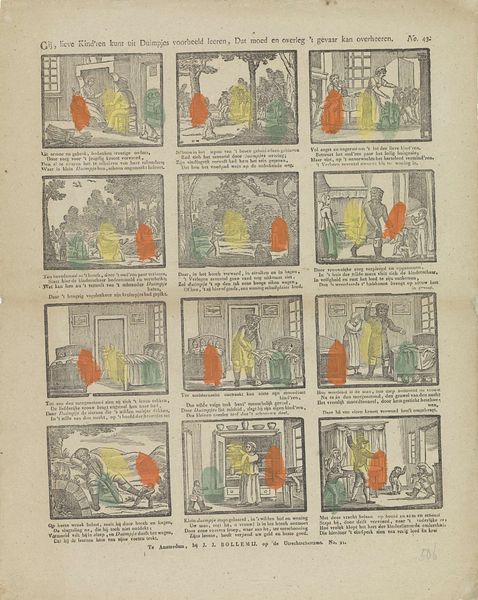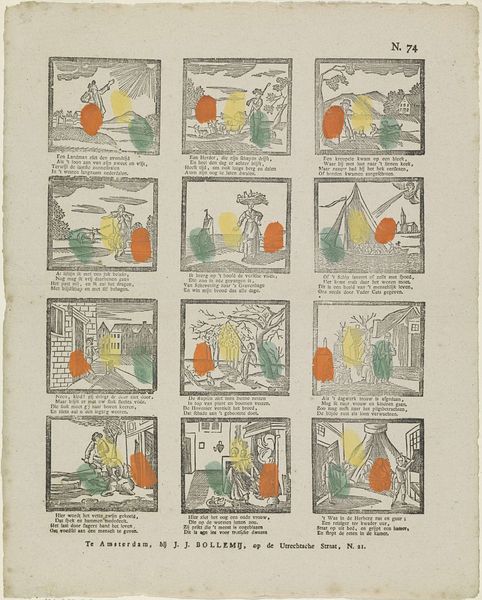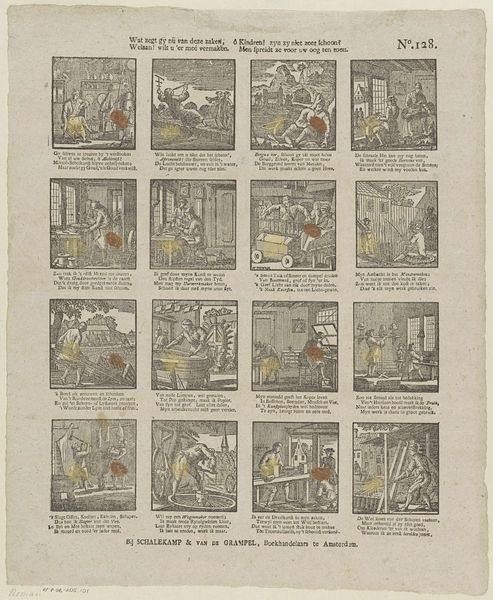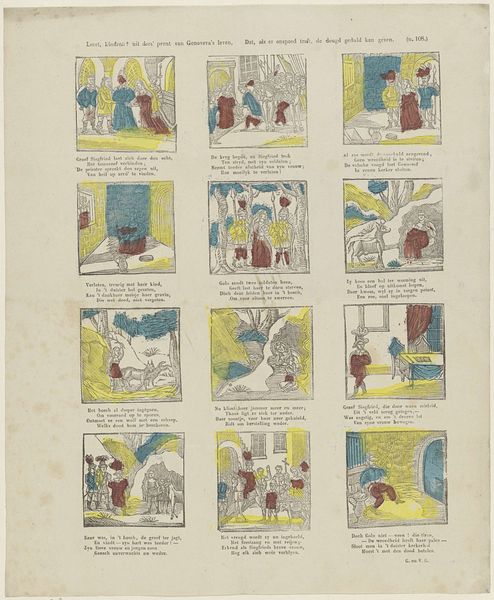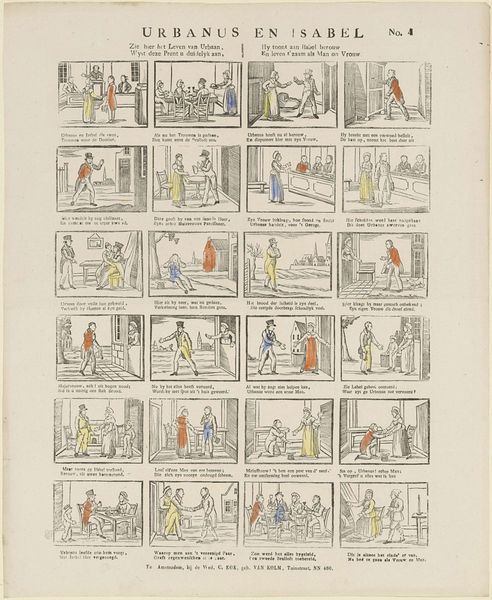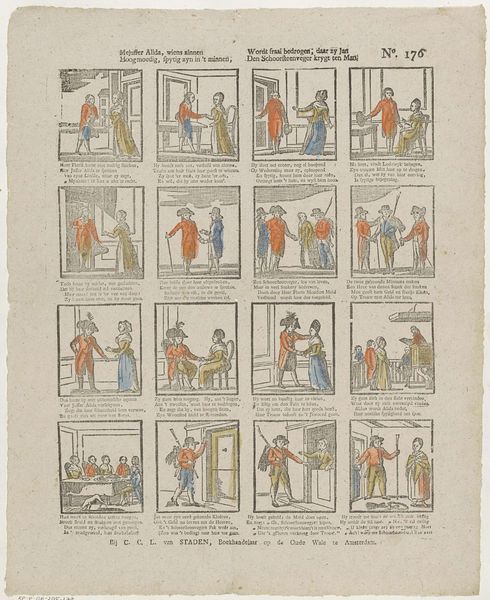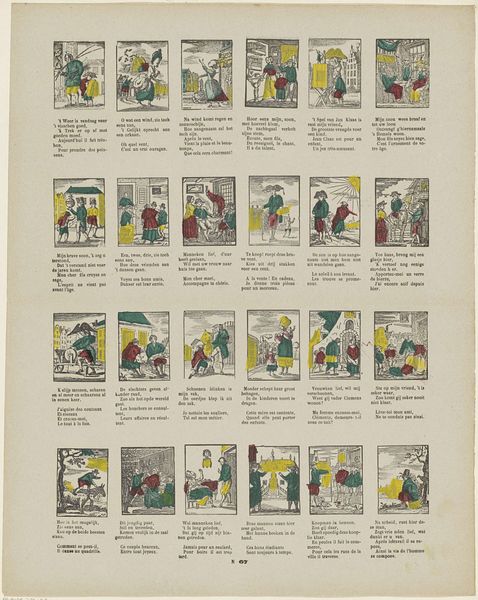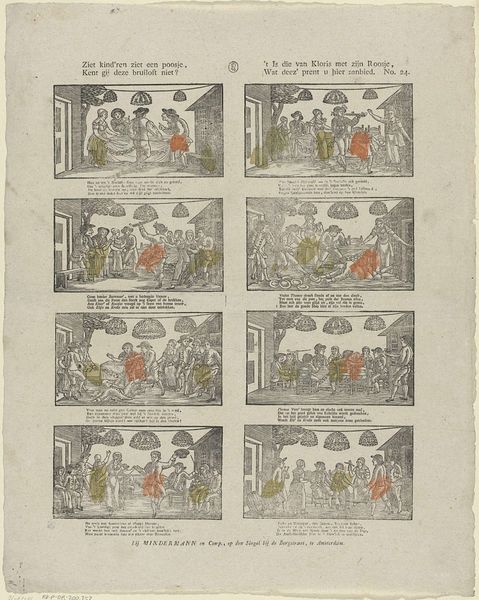
Wat zegt gy nu van deze zaken, ô kinderen! zyn zy niet zeer schoon? / Welaan! wilt u 'er meê vermaken. / Men spreidt ze voor uw oog ten toon 1806 - 1830
0:00
0:00
print, engraving
#
comic strip sketch
#
aged paper
#
quirky sketch
#
narrative-art
#
dutch-golden-age
# print
#
old engraving style
#
sketch book
#
personal sketchbook
#
sketchwork
#
sketchbook drawing
#
genre-painting
#
storyboard and sketchbook work
#
sketchbook art
#
engraving
Dimensions: height 432 mm, width 340 mm
Copyright: Rijks Museum: Open Domain
Curator: Welcome! We’re standing before a rather charming engraving from between 1806 and 1830, currently held at the Rijksmuseum. It's entitled "Wat zegt gy nu van deze zaken, ô kinderen! zyn zy niet zeer schoon? / Welaan! wilt u 'er meê vermaken. / Men spreidt ze voor uw oog ten toon," by Hermanus Numan. Editor: My initial impression is how this feels almost like an early storyboard. The small panels and aged paper give it such a distinctive, historical narrative vibe. It's quite playful, too. Curator: Exactly! Numan was clearly invested in visualizing stories for children, offering moral lessons or glimpses into everyday life, rendered with meticulous detail. You see the numbered panels, like frames in a larger societal discourse aimed at educating through imagery. Editor: Yes, and considering the context, engravings were relatively accessible, making these narratives widely available. I'm interested in the production; the labor involved in creating each tiny scene, transferring that detail onto the plate. It’s repetitive but essential work for disseminating these ideas. Curator: The work does reflect the didactic culture of the era. The stories likely resonated deeply with the values being instilled. We should remember that even "children’s art" participates in social conditioning and maintaining particular ideologies. Editor: It makes me consider the material itself—the paper, the ink, and how these components age, change over time, taking on a historical character all their own. Each faded line contributes to the overall story, adding to its worth. Curator: I concur. It serves as a visual time capsule reflecting its place in history, illustrating not only what was depicted, but also the dissemination, consumption, and understanding of particular social and moral tenets for Dutch society during the early 19th century. Editor: Absolutely. A close study of material practices such as printing or engraving allows a much deeper understanding of production values. Curator: Indeed. Considering the artistic and societal environment is what gives the work its lasting interest, far more than just its aesthetic charm. Editor: Very well, on this topic of artistry we've seen how method affects importance as much as subject.
Comments
No comments
Be the first to comment and join the conversation on the ultimate creative platform.
